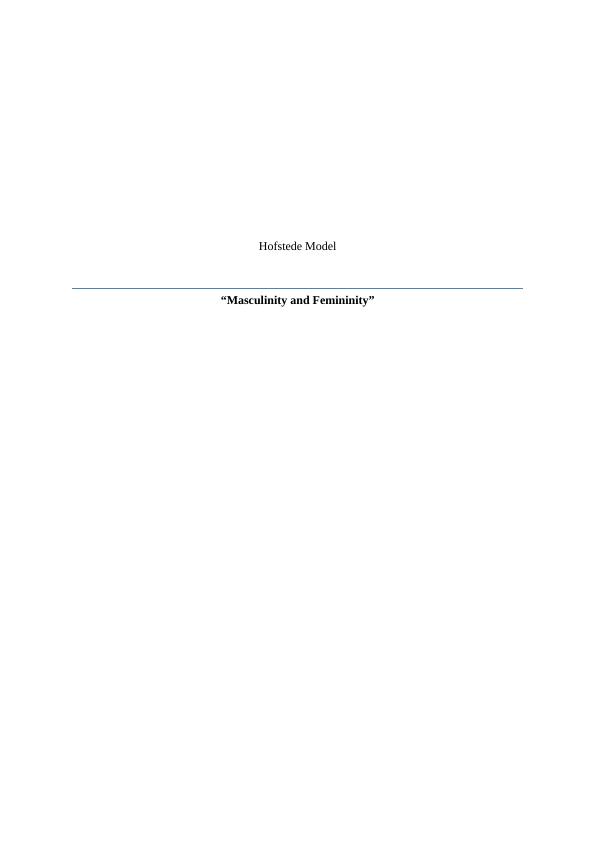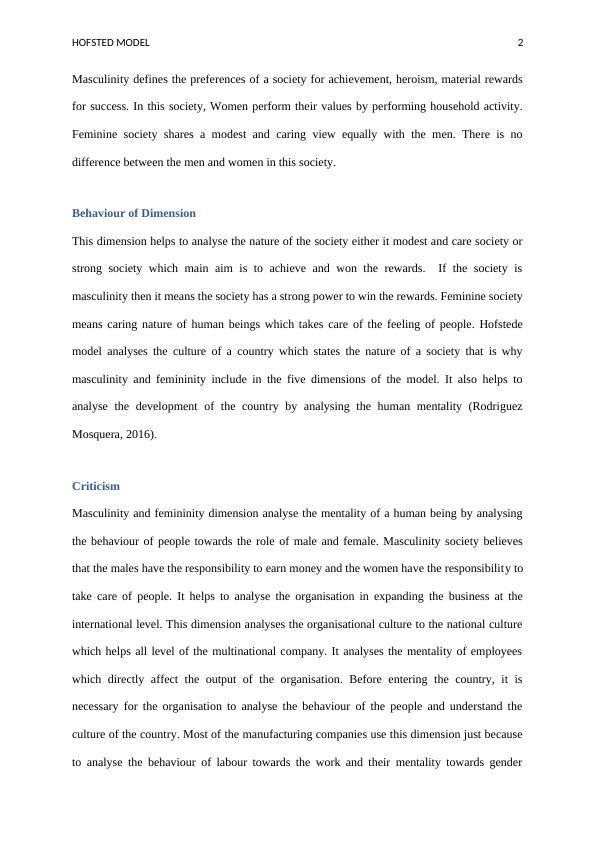Hofstede Model: Masculinity and Femininity Dimension Analysis
9 Pages2584 Words400 Views
Added on 2023-06-03
About This Document
This report analyses the Masculinity and Femininity dimension of Hofstede model and its impact on the culture of the country. It discusses the behaviour of the society and its impact on the values of men and women. The report also highlights the limitations of the Hofstede model and its scope.
Hofstede Model: Masculinity and Femininity Dimension Analysis
Added on 2023-06-03
ShareRelated Documents
End of preview
Want to access all the pages? Upload your documents or become a member.
Study Skill | assignment
|6
|1387
|409
Importance of Hofstede Cultural Dimension in Managing Cross-Cultural Issues
|5
|1500
|344
Leadership in Business
|8
|515
|38
Cross Cultural Comparison and Challenges Faced by Burlington Industries
|9
|2357
|461
Intercultural Management in Business
|8
|1727
|95
Hofstede's Five Different Dimensions of Culture
|6
|1286
|422



